Your First Knitting Project: A No-Frills Guide to Yarn, Needles, and Not Giving Up
I still remember my first real knitting project. I say “real” because it was supposed to be a simple scarf, but honestly, the thing that came off my needles was more of a stiff, lopsided trapezoid. The yarn was a fuzzy, dark navy acrylic I’d snagged on sale, and the needles were these heavy, slick metal things that felt totally alien in my hands. Every single stitch was a fight. My starting edge was so tight I could barely force the needle into the loops on the first row. The result? A disaster. I almost quit right then and there.
In this article
But I’m sharing this for a reason. Learning to knit is a physical skill, a lot like learning guitar or getting the hang of a pottery wheel. Your hands literally have to build new muscle memory. And for the past couple of decades, I’ve seen it all—from teaching brand-new knitters in cozy yarn shops to guiding friends through their first sweaters. The biggest lesson is this: a great start comes from understanding your tools, not just copying some motions from a video. That’s what we’re going to do here.

First Things First: Understanding Your Tools
Before you even think about making a stitch, let’s talk about your gear. The yarn and needles you choose will make or break your first experience. Seriously. Grabbing the cheapest stuff on the shelf is a classic beginner move, and it almost always leads to a world of frustration.
How to Choose Your First Yarn
Walking into a craft store or a dedicated yarn shop can feel… intense. There are walls of color and texture, and it’s easy to get distracted by a sparkly, fluffy skein. But for your first project, we need to choose with our brains, not just our hearts. We’re on the hunt for something that’s forgiving and easy to see.
A Quick Detour: Skeins, Balls, and Hanks
Heads up! This is a super common beginner trap. Yarn comes in a few different forms. You’ll most often see it in a ready-to-use shape called a ‘skein’ or ‘ball.’ You can just pull the end from the center or the outside and start knitting. But sometimes, especially at smaller yarn shops, you’ll find it in a beautiful twisted loop called a ‘hank.’
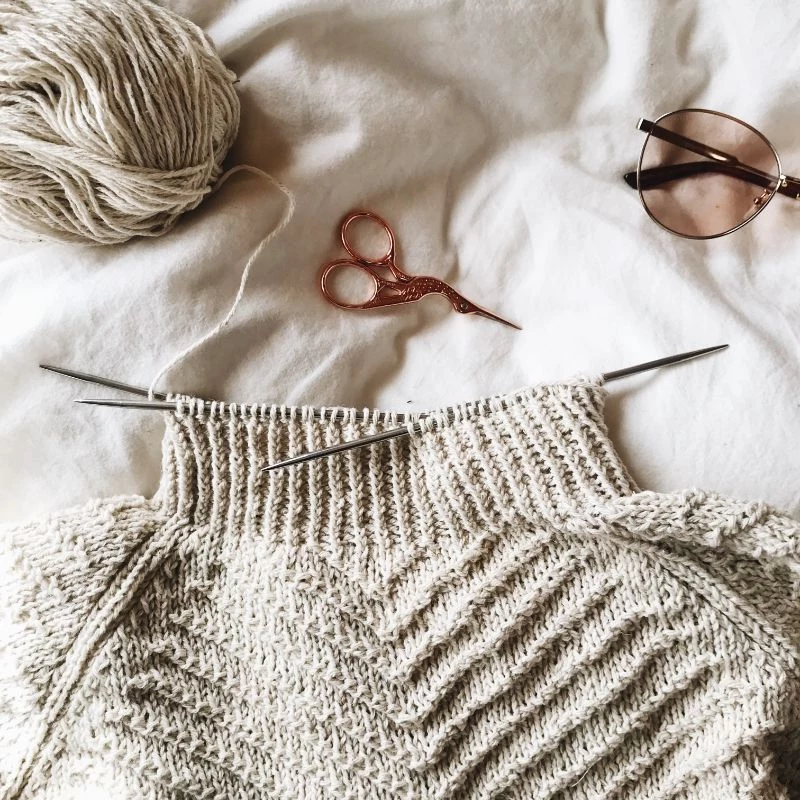
You absolutely cannot knit directly from a hank. I repeat, do not try it! It will collapse into a hopelessly tangled nightmare. You have to wind it into a ball first. Most yarn shops are happy to do this for you (sometimes for a small fee, like a dollar or two), or you can do it yourself by draping it over the back of a chair and winding it by hand. Just know this going in!
Fiber Matters (More Than You Think)
- Wool: Honestly, this is my number one pick for newbies. A good wool yarn has natural elasticity, or “memory.” When you stretch it a bit, it wants to bounce back. This is a lifesaver when your tension is all over the place, as it helps even out your stitches. A good quality, machine-washable wool (often called superwash) is the perfect starting point.
- Acrylic: This is a budget-friendly, man-made fiber that comes in every color imaginable. It’s durable and easy to wash. The downside? It has zero elasticity. It won’t forgive uneven tension, and some cheaper acrylics can feel a bit squeaky on the needles. If you go this route, look for one labeled a “premium acrylic,” which will be much softer.
- Cotton: Cotton is great for things like dishcloths because it’s super absorbent. But for a first project, it can be tough. Like acrylic, it has no stretch, which can be hard on your hands. It also has a tendency to be “splitty,” meaning your needle tip can easily poke through the middle of the strand instead of grabbing the whole loop.
- Blends: A wool/acrylic blend is a fantastic compromise. You get the forgiving bounce of wool with the easy care and lower price point of acrylic. A brand like Lion Brand Wool-Ease is a classic for a reason.
Yarn Weight: Your “Just Right” Thickness
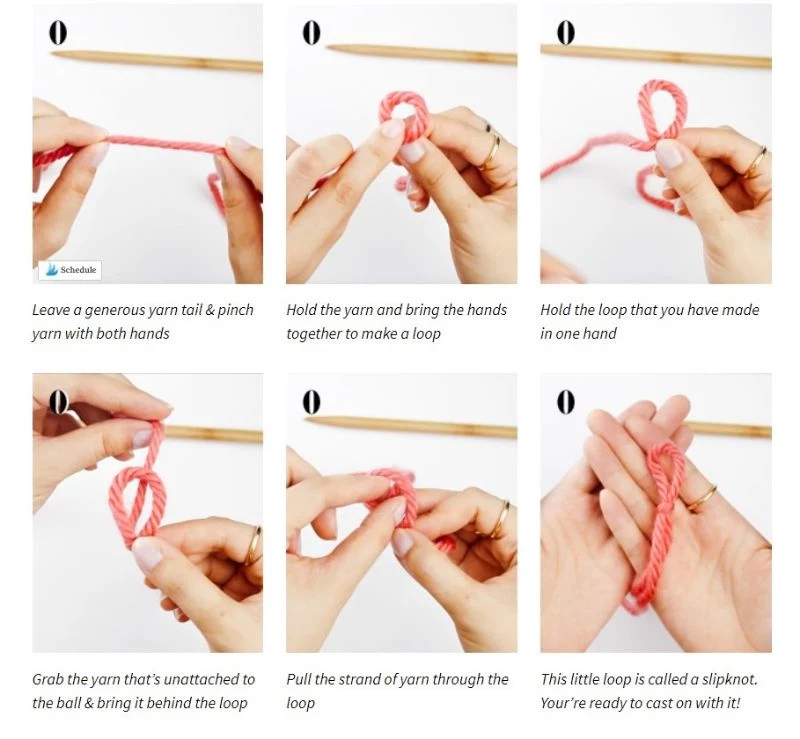
Yarn comes in different thicknesses, called weights. For your first project, you want to be right in the middle. Look for a Weight 4 (Worsted) or a slightly thicker Weight 5 (Bulky) yarn. They’re thick enough that you can easily see your stitches to spot mistakes, but not so thick that they feel clumsy. Plus, your project will knit up pretty quickly, which is a great motivator!
Let’s Talk Needles
The material your needles are made from has a huge impact on your knitting experience. It’s all about friction.
Let’s break down the main contenders, wood versus metal.
Think of wood or bamboo needles as your friendly driving instructor. They have a bit of a ‘grippy’ surface. This gentle friction is amazing for beginners because it helps prevent your stitches from accidentally slipping and flying off the needle—a moment of pure panic we’ve all experienced. They’re also lightweight and feel warm in your hands. My go-to recommendation for any new knitter.
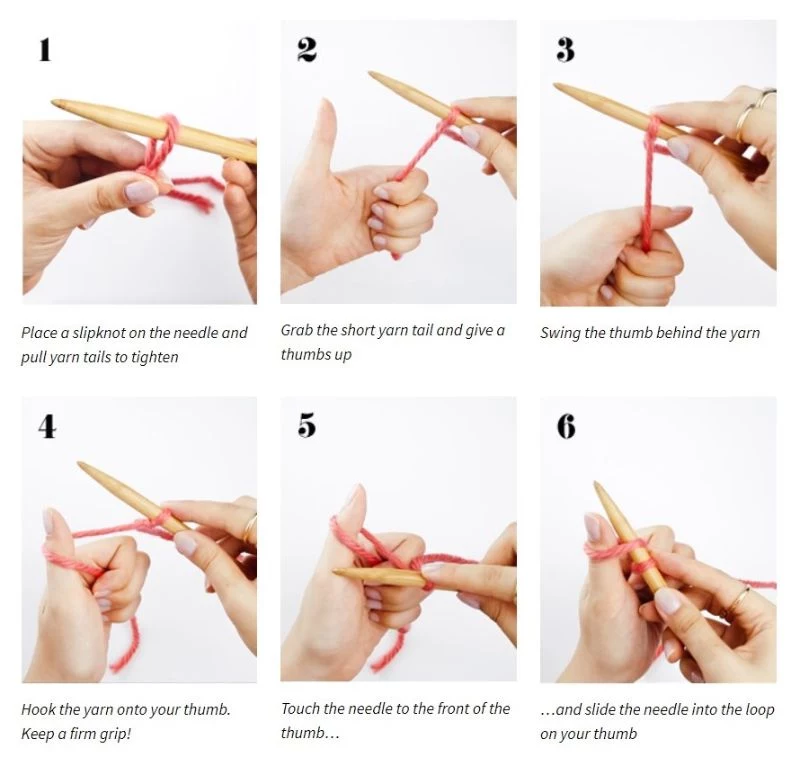
On the other hand, metal needles (usually aluminum or steel) are the sports cars of the knitting world. They are slick and fast. Stitches glide effortlessly, which is fantastic for experienced knitters looking for speed. For a beginner, though, it can feel like trying to balance on an ice rink. Stitches can and will escape if you’re not careful! Save these for your second or third project, once you have your confidence up.
You’ll also see plastic needles, which are cheap and light, but the quality can be all over the place. Some are fine, others feel sticky and can mess with your flow.
A Beginner’s First Shopping List:
Okay, let’s put it all together. When you walk into the store (like a Jo-Ann, Michaels, or your local yarn shop), here’s what to look for:
- Yarn: One skein of worsted weight (Weight 4) wool or a wool-blend yarn in a light, solid color. Avoid dark colors (it’s a nightmare to see your stitches) and super fuzzy yarns for now. A good quality skein will run you about $8 to $15. Look for brands like Cascade 220 Superwash or Lion Brand Wool-Ease. Crucially, check the label for the yardage—you’ll want at least 200-220 yards for a decent-sized scarf.
- Needles: One pair of bamboo or birch circular needles in US Size 8 (5.0 mm). A 24-inch or 32-inch cable is perfect. Even though we’re knitting a flat scarf, circulars are way more ergonomic because the weight of your project rests in your lap on the cable, not on your wrists. This will save you a lot of aches and pains. Expect to pay around $10 to $18 for a good pair.
- Notions: A small tapestry needle (sometimes called a darning needle). It’s just a blunt-tipped needle with a large eye. You’ll need this for the very last step. You can usually get a little pack of them for a couple of bucks.
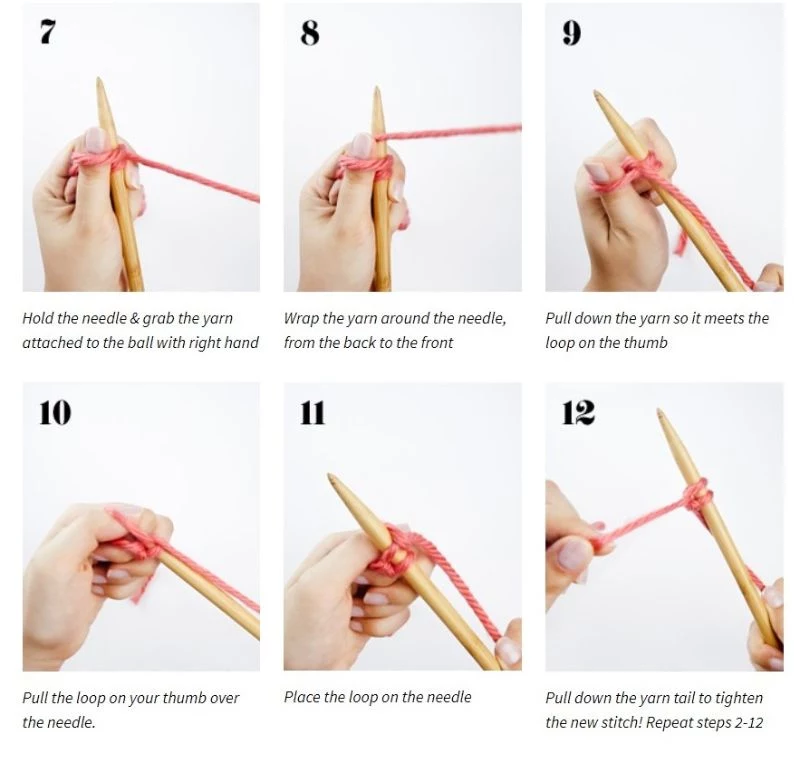
The Three Core Skills
All of knitting really boils down to three things: getting stitches on the needles, working them, and getting them off again. Let’s tackle them one by one.
Your First Scarf Recipe & The Cast-On
There are a ton of ways to start a project, but the Long-Tail Cast-On is the most versatile. It creates a stretchy, neat edge that looks great. The trickiest part is guessing how much yarn
Inspirational Gallery
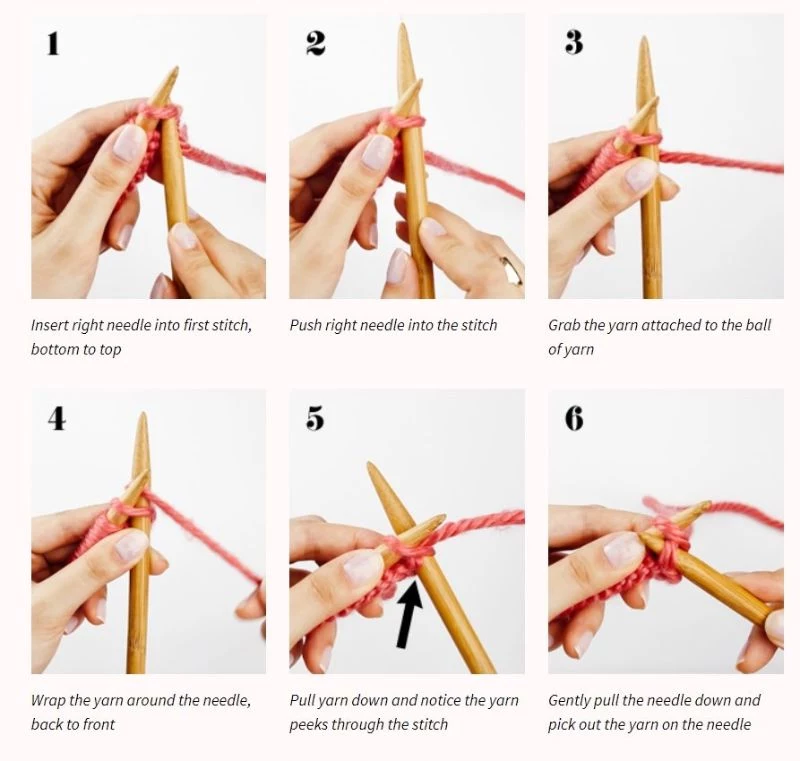
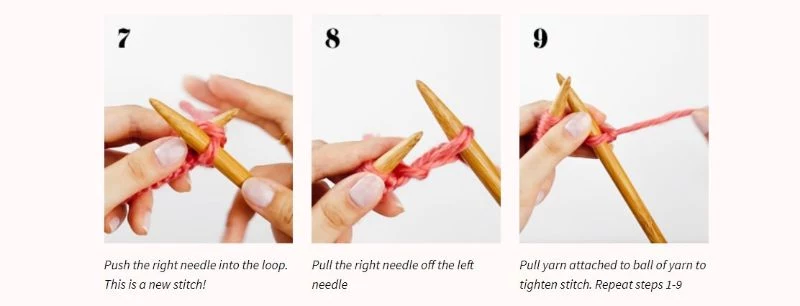
That initial clumsiness is universal. Your brain is forging new neural pathways to coordinate your hands in an unfamiliar way. Be patient! After a few hours, you’ll notice the movements becoming smoother. This isn’t just learning; it’s your body physically adapting. Celebrate the small victories, like a single, perfectly formed row.
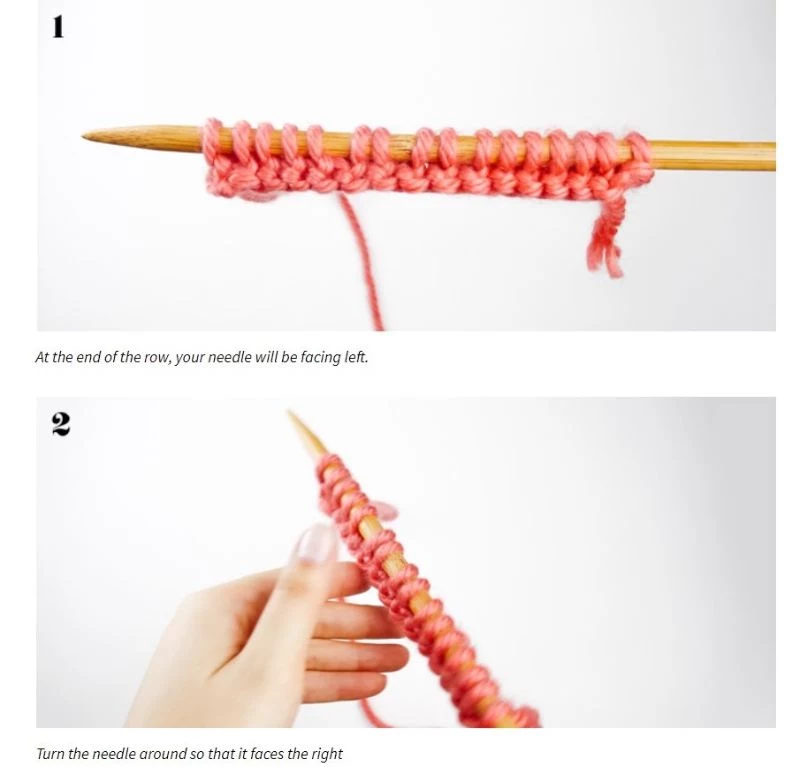
The Craft Yarn Council reports that knitting and crocheting can lower heart rate and blood pressure, and reduce harmful blood levels of the stress hormone cortisol.
This isn’t just about making something beautiful; it’s a form of active meditation. The rhythmic, repetitive motions can create a state of ‘flow,’ calming a busy mind and providing a tangible sense of accomplishment that’s profoundly good for your mental well-being.
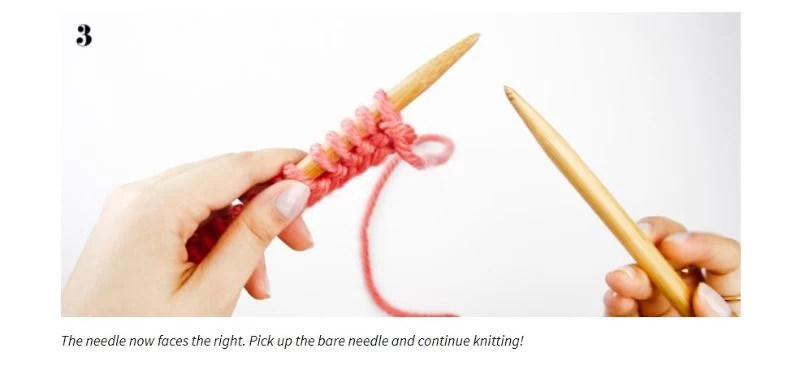
What’s the secret to those neat, professional-looking edges?
It’s often a ‘selvedge’ stitch. A simple trick is to slip the first stitch of every row as if you were going to purl it (without actually working it) and then knit the last stitch as normal. This creates a clean, chain-like edge that makes your project look instantly more polished and is much easier to seam later on.
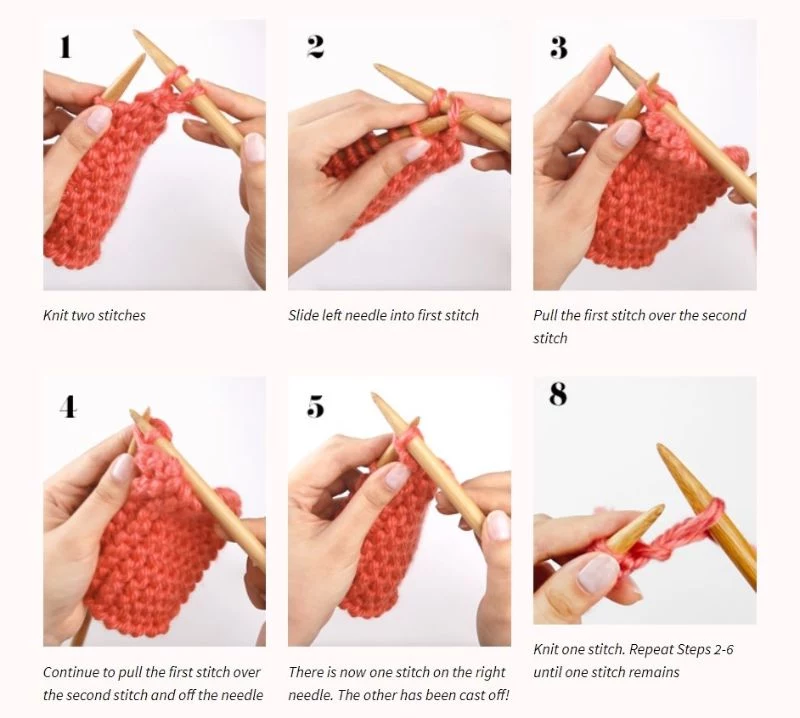
- Evens out inconsistent stitches
- Allows the fabric to ‘bloom’ and soften
- Helps the project lay flat and achieve its final dimensions
The magic? It’s called blocking. For most wools, this simply means soaking your finished piece in cool water, gently squeezing out the excess, and pinning it to a mat or towel to dry in the desired shape. It’s the final, transformative step that takes a project from ‘homemade’ to ‘handmade’.
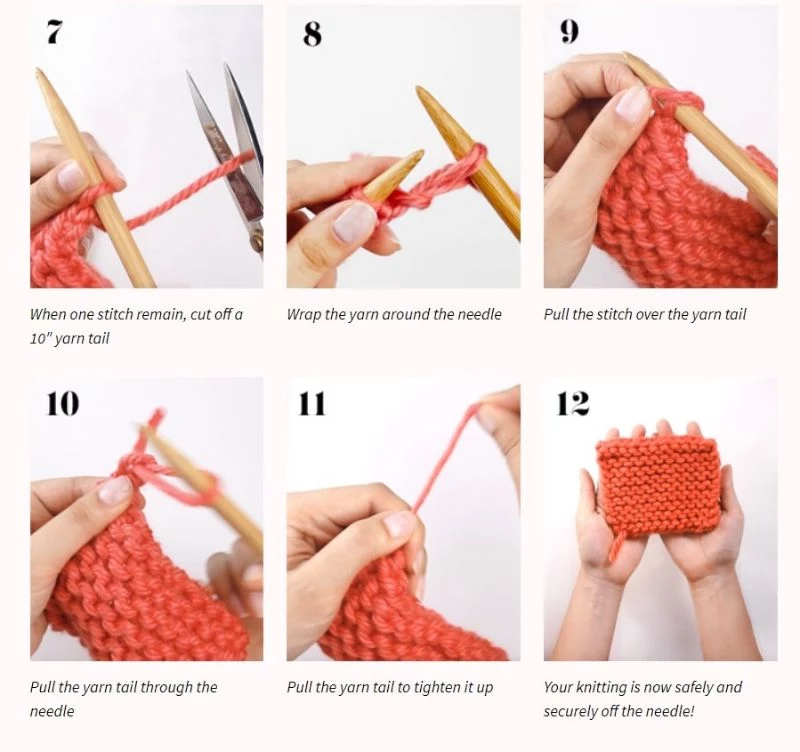
Wooden Needles: Often made from birch or bamboo, they have a bit of ‘grip,’ which is fantastic for beginners. Yarn is less likely to slip off accidentally. Brands like KnitPro or Chiaogoo offer excellent, smooth wooden options.
Metal Needles: Typically aluminum or stainless steel, these are slick and fast. Once you have consistent tension, you’ll appreciate the speed, but beginners might find them slippery. Addi Turbos are famous for their speed.
For your first project, warm, grippy wood is usually a friendlier choice.
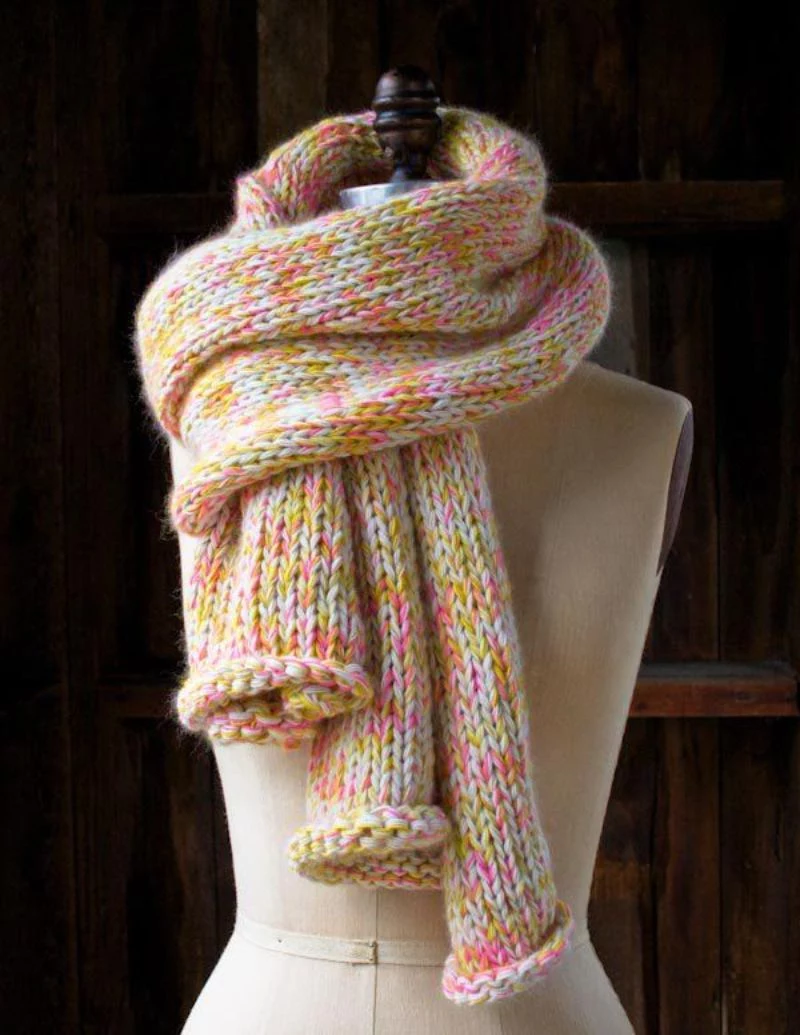
Don’t just stare at the wall of yarn—decode the label! It’s your project’s instruction manual before you even start.
- Weight Symbol: A number inside a yarn ball icon (e.g., a ‘4’ for Worsted) tells you the yarn’s thickness. Match this to your pattern.
- Needle Size: A recommendation for the needle size (in mm and US) that typically works well with this yarn.
- Gauge Swatch: A small square with numbers telling you how many stitches and rows should fit into a 10cm/4-inch square.
- Fiber Content: What’s it made of? 100% Superwash Merino Wool, or an Acrylic/Cotton blend? This affects feel and care.
- Care Instructions: Symbols for machine wash, hand wash, or dry flat are crucial for your finished item’s longevity.
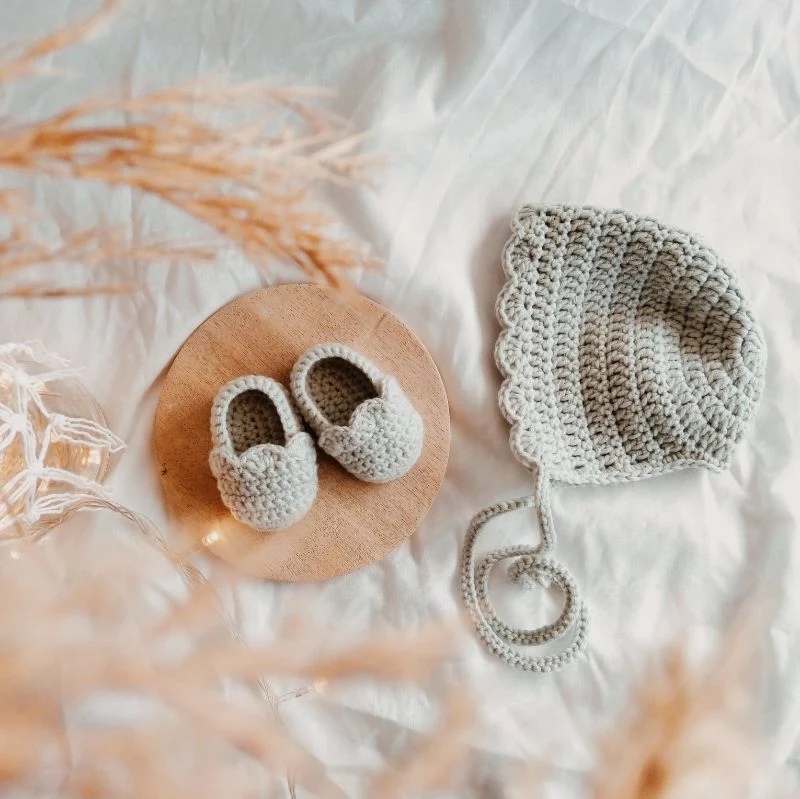
A ‘hank’ of yarn must be wound into a ball or ‘cake’ before you can knit with it. Knitting directly from the hank will result in a massive, unsalvageable tangle.
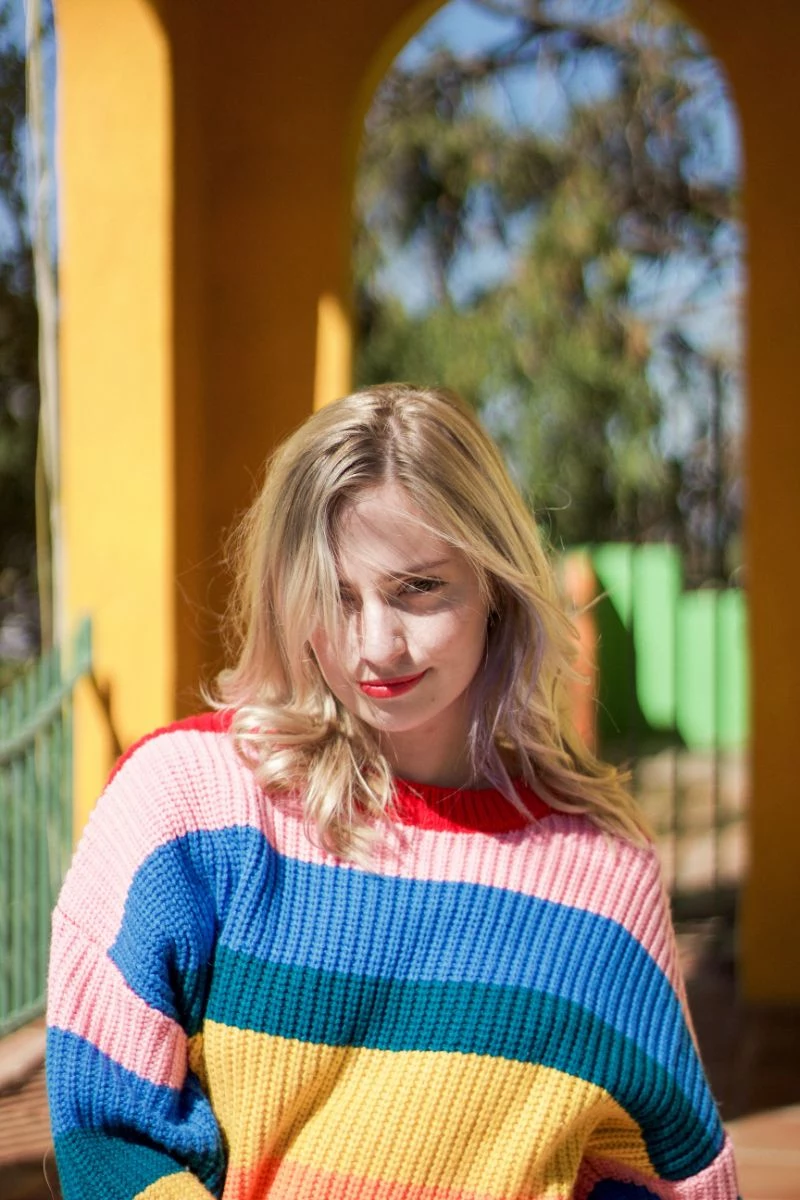
One of the best beginner yarns on the market is Berroco Vintage Worsted. Why? It’s a blend of acrylic and wool, making it affordable, soft, and—crucially—machine washable. It has excellent stitch definition, meaning your knit and purl stitches will be easy to see and learn from, and it comes in a huge range of solid and heathered colors.
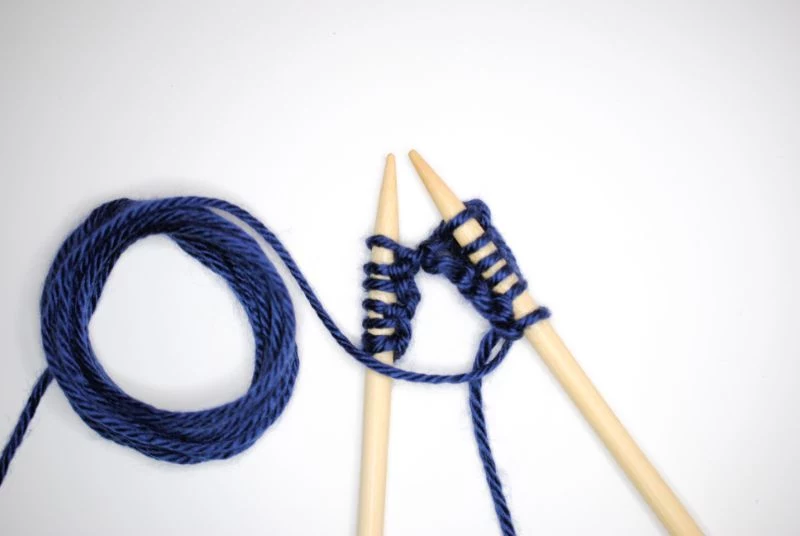
Ready to move beyond the scarf but not quite ready for a sweater? The humble dishcloth is the perfect next step. It’s small, so you get the satisfaction of a finished object quickly. It’s a fantastic canvas for practicing new stitches, like a seed stitch or a simple basketweave, and if you make a mistake? It’s just a dishcloth! Use a sturdy, absorbent 100% cotton yarn like Lily Sugar’n Cream.
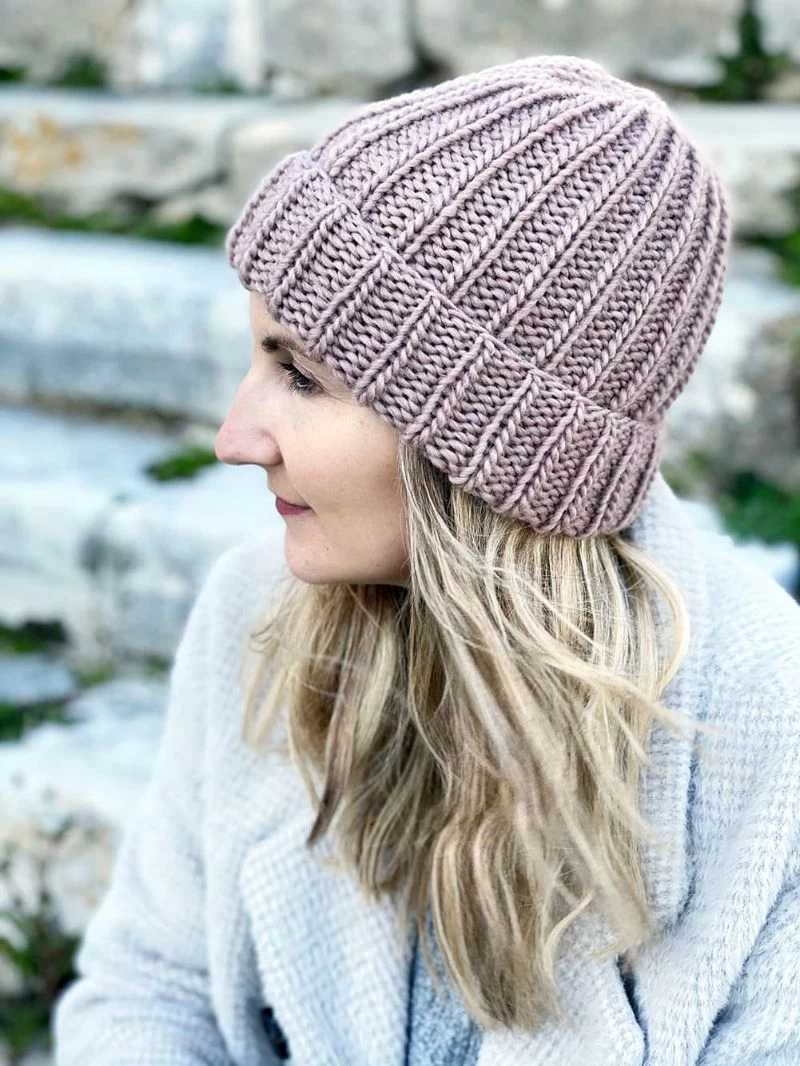
Dropped a stitch? Don’t panic!
It looks like a terrifying ladder running down your work, but it’s easily fixable with a crochet hook. Simply insert the hook through the live loop from the front, hook the lowest ‘rung’ of the ladder, and pull it through the loop. Repeat for each rung until you’re back at the top, then place the stitch back on your left needle. It’s a knitter’s superpower.
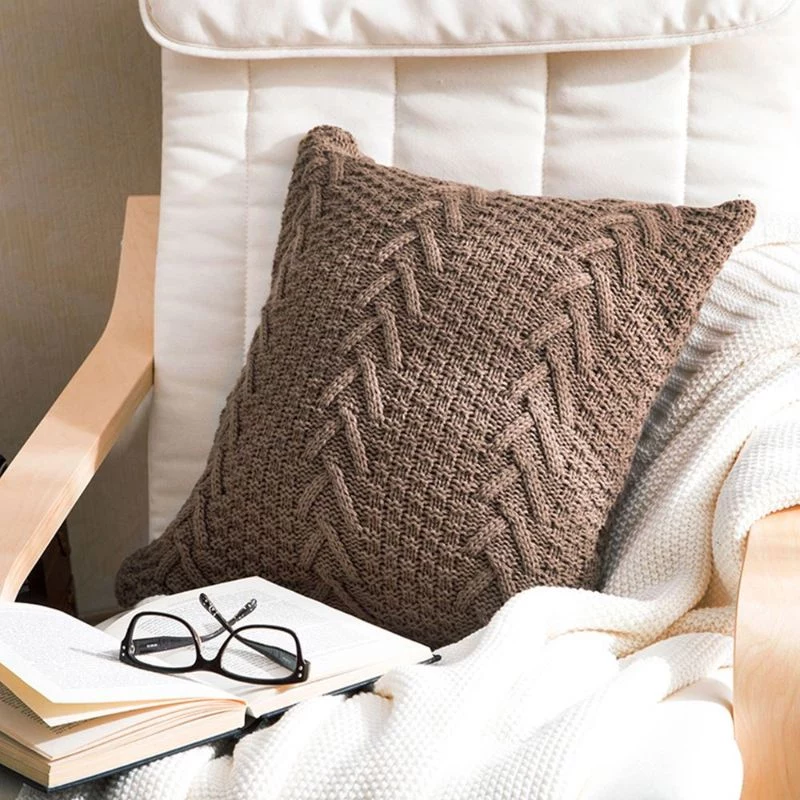
- A good quality value yarn: Think Knit Picks ‘Wool of the Andes’ or Lion Brand ‘Wool-Ease’. They offer great performance without the high price tag of hand-dyed yarns, perfect for practicing.
- Interchangeable Needle Set: Instead of buying new needles for every project, a set like those from Lykke or Knitter’s Pride gives you multiple needle sizes and cable lengths that can be mixed and matched. A great long-term investment.

The online knitting world is your biggest resource. Ravelry.com is a massive, free database of patterns and forums. On Instagram, follow hashtags like #knittersofinstagram and #beginnerknitting to see what others are making. Stuck on a technique? A quick search on YouTube will bring up hundreds of visual tutorials. You’re never knitting alone.
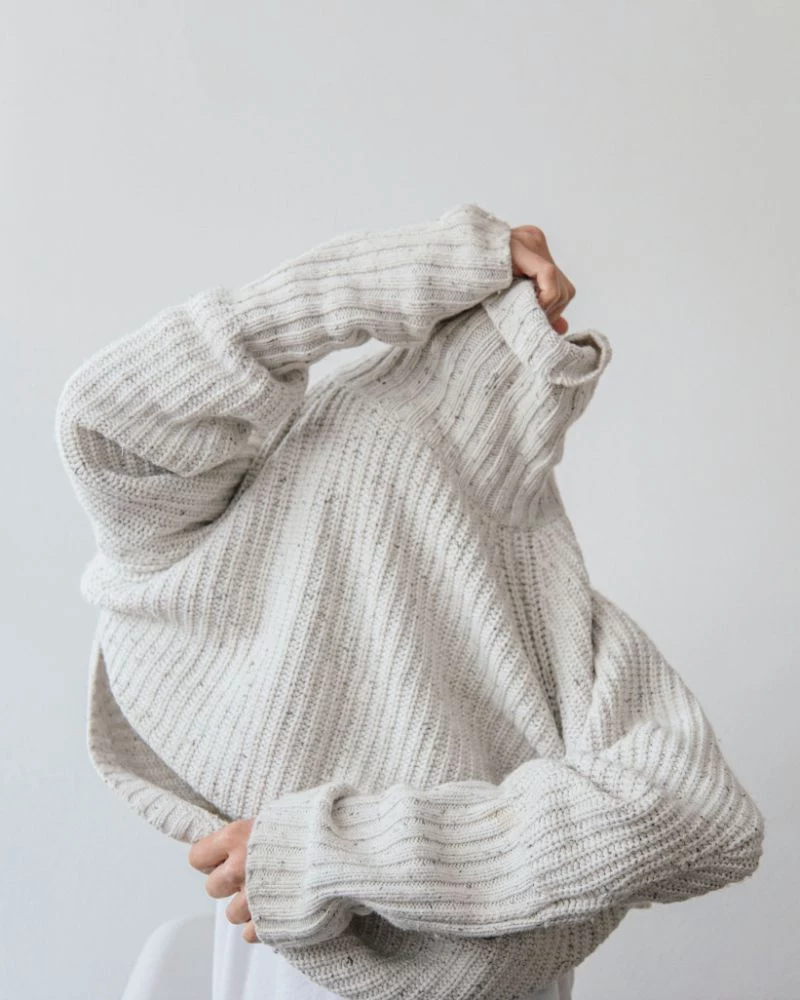
Long-Tail Cast-On: Creates a stretchy, neat, and robust edge. It’s the go-to for most projects, from hats to sweater hems. It does require estimating the length of the ‘tail’ beforehand.
Knitted Cast-On: A simpler, more controlled method where you knit each new stitch on. It creates a firmer, less stretchy edge, which can be great for things like blanket borders or placemats where you don’t want curling.
Start by mastering the long-tail; it’s the most versatile.
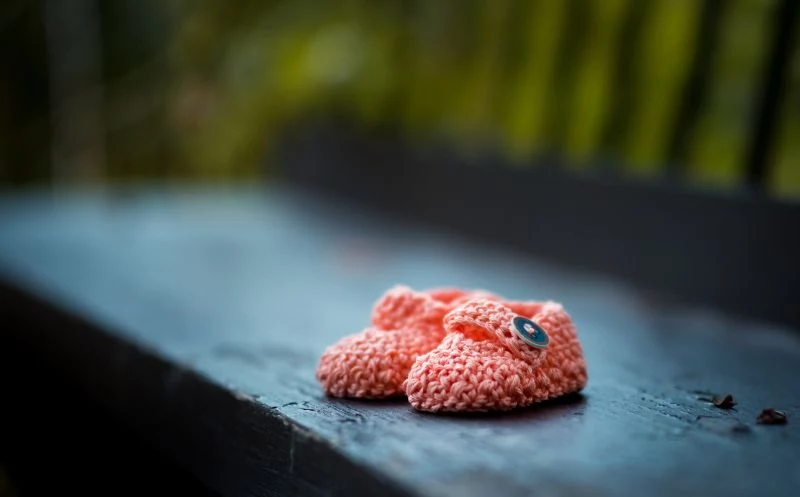
The oldest known knitted artifacts are a pair of intricately patterned cotton socks found in Egypt, dating from the 11th century CE. Knitting has been clothing and comforting us for over a thousand years!
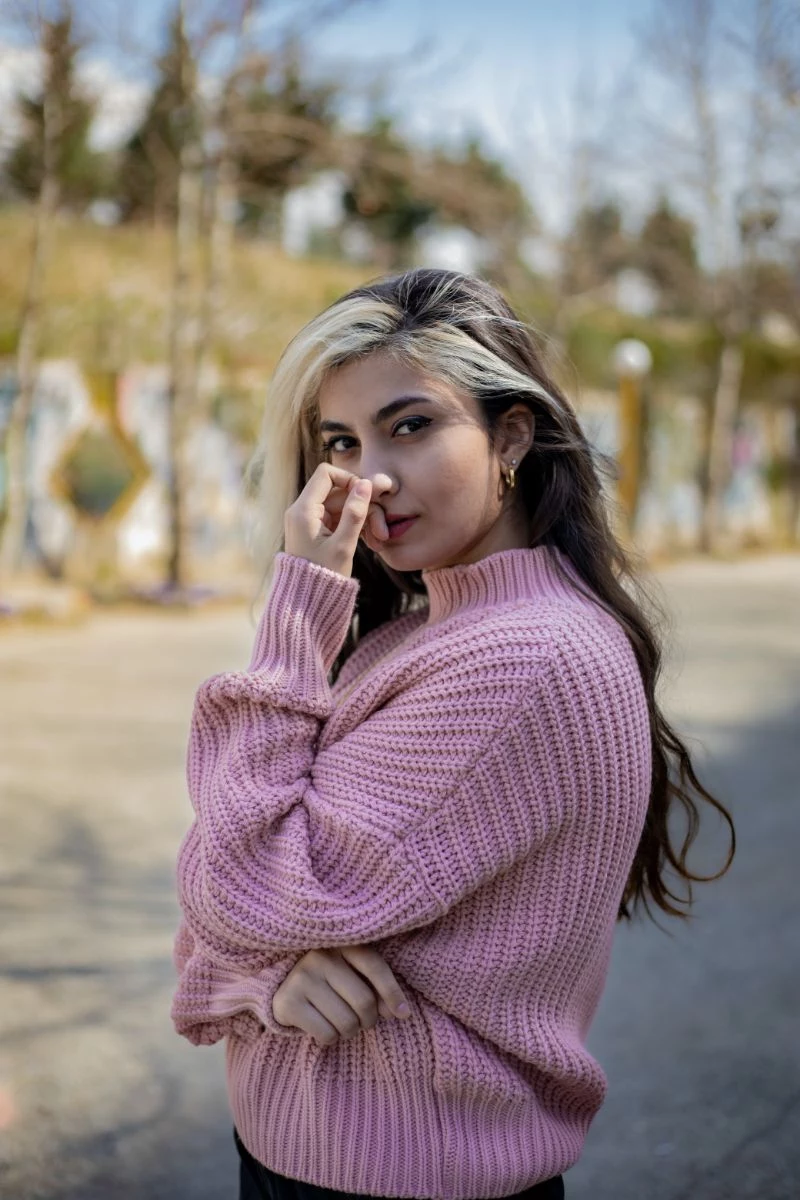
Feeling brave enough for a simple lace pattern or a cabled scarf? Weave in a ‘lifeline’ first. After you’ve completed a pattern repeat, use a tapestry needle to thread a contrasting piece of scrap yarn through every stitch on your needle, being careful not to catch the needle itself. If you make a mistake later on, you can simply remove your needles and unravel your work back to the lifeline, which will hold your stitches safely.
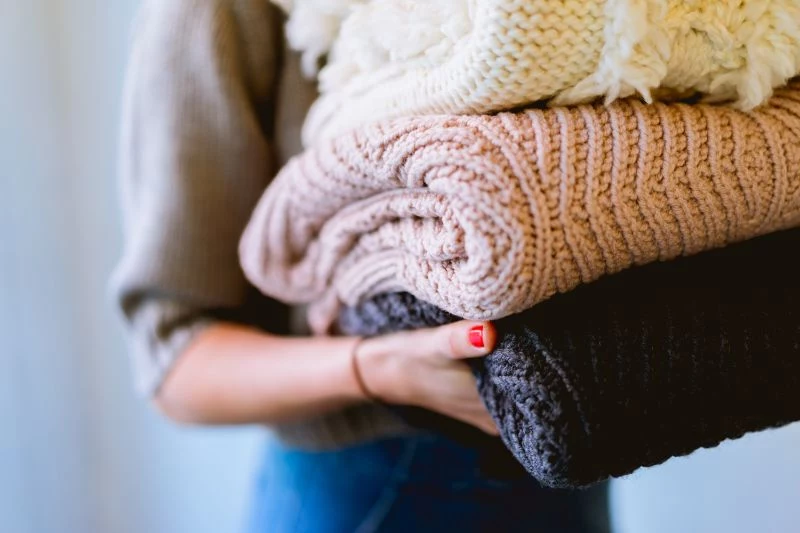
The term ‘worsted’ or ‘aran’ or ‘DK’ refers to the thickness of the yarn strand. The Craft Yarn Council’s standardized system ranks yarn from 0 (Lace) to 7 (Jumbo). For a first project, sticking to a Weight 4 (Worsted) or Weight 5 (Bulky) yarn is ideal. They are thick enough to knit up quickly and make stitches easy to see and handle, building your confidence with every row.
The absolute best thing you can knit is a ‘swatch’. It’s a small square (usually 6×6 inches) knitted with the exact yarn and needles you plan to use for your project. It feels like a boring detour, but it tells you everything: if you like the fabric, how the color looks knitted up, and most importantly, your ‘gauge’—the number of stitches per inch. Washing and blocking your swatch also shows you how the final fabric will behave. It is the single most important step to ensure your project fits.










